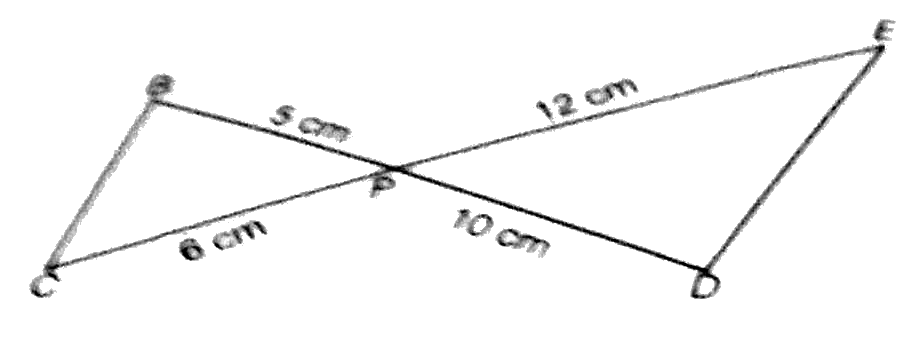On Ellingham diagrams if two graphs intersect each other, what does the point of intersection indicate ?
To answer the question about what the point of intersection indicates on an Ellingham diagram, we can break it down into the following steps:
1. Understanding Ellingham Diagrams:
- An Ellingham diagram is a graphical representation that shows the relationship between temperature and the stability of compounds, particularly metal oxides and sulfides. The vertical axis typically represents the Gibbs free energy (ΔG) of formation, while the horizontal axis represents temperature.
2. Identifying the Graphs:
- In an Ellingham diagram, different lines represent different reactions or compounds. Each line shows how the Gibbs free energy changes with temperature for a specific reaction.
3. Point of Intersection:
- When two lines on the Ellingham diagram intersect, it indicates a specific temperature at which the Gibbs free energy for both reactions is equal.
4. Significance of the Intersection:
- The point of intersection signifies that at this particular temperature, the change in Gibbs free energy (ΔG) for both reactions is zero. This means that both reactions are equally favorable at this temperature, and neither reaction is thermodynamically favored over the other.
5. Conclusion:
- Therefore, the point of intersection on an Ellingham diagram indicates that ΔG = 0 for the reactions represented by the intersecting lines.
Final Answer:
The point of intersection on an Ellingham diagram indicates that ΔG = 0 for the reactions represented by the intersecting lines.
- An Ellingham diagram is a graphical representation that shows the relationship between temperature and the stability of compounds, particularly metal oxides and sulfides. The vertical axis typically represents the Gibbs free energy (ΔG) of formation, while the horizontal axis represents temperature.
- In an Ellingham diagram, different lines represent different reactions or compounds. Each line shows how the Gibbs free energy changes with temperature for a specific reaction.
- When two lines on the Ellingham diagram intersect, it indicates a specific temperature at which the Gibbs free energy for both reactions is equal.
- The point of intersection signifies that at this particular temperature, the change in Gibbs free energy (ΔG) for both reactions is zero. This means that both reactions are equally favorable at this temperature, and neither reaction is thermodynamically favored over the other.
- Therefore, the point of intersection on an Ellingham diagram indicates that ΔG = 0 for the reactions represented by the intersecting lines.
The point of intersection on an Ellingham diagram indicates that ΔG = 0 for the reactions represented by the intersecting lines.
Topper's Solved these Questions
- GENERAL PRINCIPLES AND PROCESSES OF ISOLATION OF ELEMENTSBOOK - AAKASH INSTITUTE ENGLISHCHAPTER - GENERAL PRINCIPLES AND PROCESSES OF ISOLATION OF ELEMENTSEXERCISE - Exercise
19 Videos
- GENERAL PRINCIPLES AND PROCESSES OF ISOLATION OF ELEMENTSBOOK - AAKASH INSTITUTE ENGLISHCHAPTER - GENERAL PRINCIPLES AND PROCESSES OF ISOLATION OF ELEMENTSEXERCISE - Assignment (Section-A) Objective type Question
30 Videos
- GENERAL PRINCIPLES AND PROCESSES OF ISOLATION OF ELEMENTSBOOK - AAKASH INSTITUTE ENGLISHCHAPTER - GENERAL PRINCIPLES AND PROCESSES OF ISOLATION OF ELEMENTSEXERCISE - Assignment (Section-D) Assertion-Reason Type Question
15 Videos
- EQUILIBRIUMBOOK - AAKASH INSTITUTE ENGLISHCHAPTER - EQUILIBRIUMEXERCISE - ASSIGNMENT (SECTION -D)
20 Videos
- GENERAL PRINCIPLES AND PROCESSES OF ISOLATION OF ELEMENTSBOOK - AAKASH INSTITUTE ENGLISHCHAPTER - GENERAL PRINCIPLES AND PROCESSES OF ISOLATION OF ELEMENTSEXERCISE - Try Yourself
33 Videos
Similar Questions
Can two isothermal curves intersect each other?
View SolutionMagnetic lines of force may intersect each other.
View SolutionSTATEMENT -1 : No two electric field line can intersect each other.
and
STATEMENT-2 : At point of intersection electric fieldmust be zero.
View SolutionTwo circles touching both the axes intersect at (3,-2) then the coordinates of their other point of intersection is
View SolutionProve that the line of centres of two intersecting circles subtends equal angles at the two points of intersection
View SolutionIn figure BD and CE intersect each other at the point P. IsΔPBC~ΔPDE? Why?

View SolutionIn the following diagram, lines l, m and n are parallel to each other. Two transversals p and q intersect the parallel lines at points A, B, C and P, Q, R as shown.

Prove that : ABBC=PQQR
Join A and R. Let AR meets BQ at point D.
View Solution(A) : No two electric lines of force can intersect each other
(R ): Tangent at any point of electric line of force gives the direction of electric field.
View SolutionIn some cases, Ellingham diagrams (graphs) show a bend. What do you refer from it ?
View SolutionIn some cases, Ellingham diagrams (graphs) show a bend. What do you refer from it ?
View Solution
